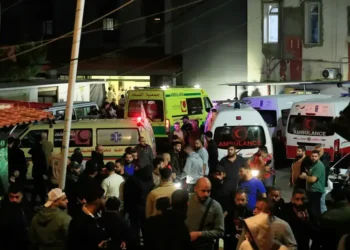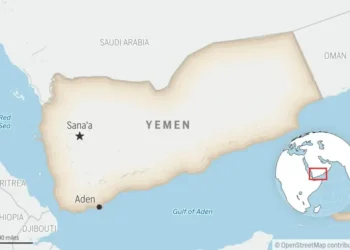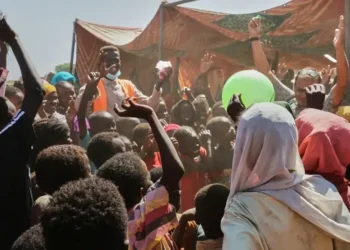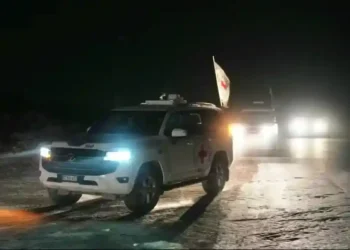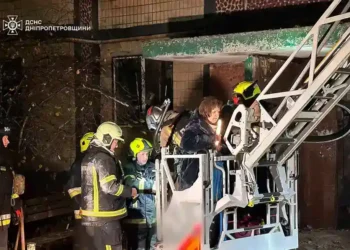U.S. Intel: Iran’s Nuclear Program Survived Strikes, Set Back Only Months
Despite President Trump’s claims of “total obliteration,” a new U.S. intelligence assessment paints a much more measured picture of the damage done to Iran’s nuclear program following recent American airstrikes.
According to an early report from the Defense Intelligence Agency (DIA), the strikes—though damaging—set Iran back by only a few months. They didn’t destroy Iran’s nuclear infrastructure entirely, as both Trump and Israeli Prime Minister Benjamin Netanyahu have publicly claimed.
The findings, first reported by CNN and confirmed by two officials familiar with the classified report, challenge the public narrative pushed by the White House and raise concerns among experts that Iran may still retain the capability to eventually build a nuclear weapon.
Key Findings: What the U.S. Intelligence Report Reveals
- Damage was significant but not total: The DIA report states that while U.S. bombers hit nuclear facilities at Fordo, Natanz, and Isfahan, these sites were not completely wiped out. Fordo’s entrance collapsed and infrastructure was damaged, but the underground enrichment facility remains largely intact.
- Iran preserved key materials: Intelligence suggests Iran had moved some of its enriched uranium stockpile before the strikes. It also retained much of its centrifuge infrastructure, essential for enriching uranium to weapons-grade levels.
- Minimal long-term disruption: Experts say the strikes set Iran’s program back only several months—far from the permanent destruction claimed by Trump and Netanyahu.
- Missed opportunity? The report raises the possibility that Iran, anticipating a strike, strategically relocated key assets, including uranium and possibly centrifuges, making the airstrikes less effective than hoped.
White House Pushes Back, Trump Doubles Down
The White House quickly rejected the DIA’s assessment. Press Secretary Karoline Leavitt called the leaked report “flat-out wrong” and accused officials of trying to “demean President Trump” and the U.S. military.
“Everyone knows what happens when you drop fourteen 30,000-pound bombs perfectly on their targets: total obliteration,” Leavitt said.
Trump’s special envoy, Steve Witkoff, who claims to have reviewed damage reports, echoed the president’s messaging and went a step further—calling the leak “treasonous” and demanding an investigation.
Trump has repeatedly insisted that the strikes left Iran’s nuclear program in ruins and that the country will “never rebuild” its facilities.
Netanyahu, too, took a victory lap, calling the strikes “historic” and declaring, “we brought to ruin Iran’s nuclear program.”
What Experts and Satellite Images Suggest
Outside observers have long suspected Iran might attempt to hide its most sensitive materials. New satellite images appear to confirm that theory:
- Trucks and bulldozers were seen at Fordo days before the attack, possibly moving enriched uranium or sealing tunnel entrances with dirt.
- Maxar Technologies, a satellite imaging firm, confirmed that Fordo’s tunnels were sealed before the bombs hit, suggesting Iran had anticipated the strikes.
- Eric Brewer, a former U.S. intelligence analyst, said it’s plausible that uranium enriched to 60% was removed and that some equipment, like centrifuges, may have also been relocated.
Could Iran Still Build a Bomb?
According to experts, the answer is yes—though with some caveats.
- Iran holds enough enriched uranium to build several bombs if it chooses to enrich it further to 90% weapons-grade levels, according to the International Atomic Energy Agency (IAEA).
- Vice President JD Vance defended the operation, saying that even if Iran kept some uranium, the strikes dismantled their ability to convert it into a weapon: “That is mission success.”
- IAEA Director Rafael Grossi has repeatedly warned that Iran’s stockpile could enable weapon production if political leadership gives the order—something that has not yet officially happened.
- Iran is also said to be constructing a third enrichment site in Isfahan, but after the joint Israeli-American strikes, the status of that site is now uncertain.
So Where Does This Leave Us?
The big takeaway: While the strikes were powerful and symbolic, they fell short of eliminating Iran’s nuclear potential.
Iran still retains a “solid foundation” for restarting its nuclear efforts, says Brewer, especially if it chooses to go covert. And with critical materials and knowledge still intact, the international community may soon face a more determined and less transparent nuclear Iran.
Kelsey Davenport, a nonproliferation expert at the Arms Control Association, warned that if Iran has already hidden centrifuges, it could enrich weapons-grade uranium at a secret facility with a small footprint.
However, Brewer notes that any covert effort would start at a disadvantage. Iran has lost some key equipment and personnel, and building a bomb won’t happen overnight.
The Bigger Picture
With tensions high and facts disputed, the truth likely lies somewhere in between public declarations and classified assessments.
Yes, the strikes hit Iran hard—but “obliteration” may be more political theater than military fact. And if Iran’s nuclear ambitions remain alive, the path forward could be even more complicated than before.
This article was rewritten by JournosNews.com based on verified reporting from trusted sources. The content has been independently reviewed, fact-checked, and edited for accuracy, neutrality, tone, and global readability in accordance with Google News and AdSense standards.
All opinions, quotes, or statements from contributors, experts, or sourced organizations do not necessarily reflect the views of JournosNews.com. JournosNews.com maintains full editorial independence from any external funders, sponsors, or organizations.
Stay informed with JournosNews.com — your trusted source for verified global reporting and in-depth analysis. Follow us on Google News, BlueSky, and X for real-time updates.



